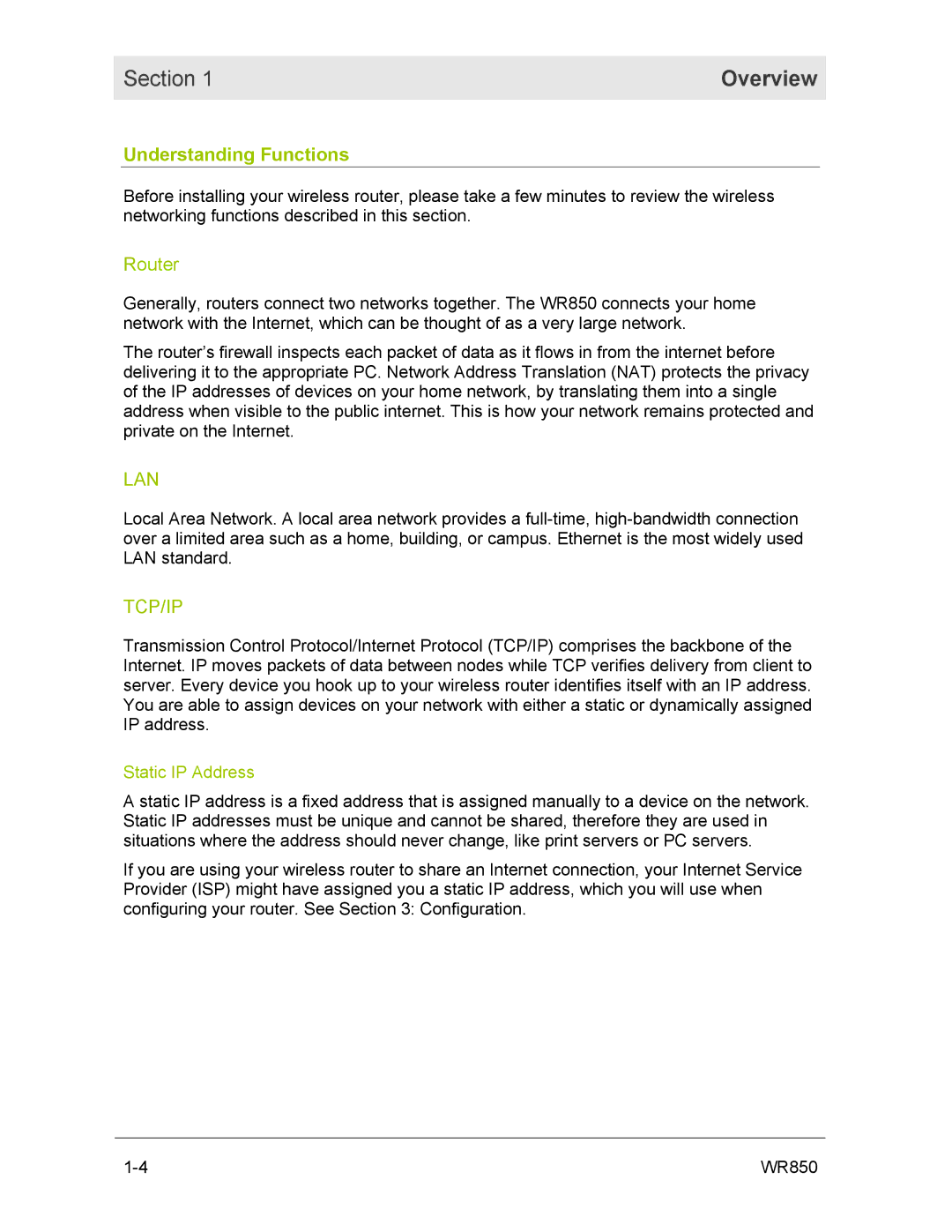
Section 1 | Overview |
|
|
Understanding Functions
Before installing your wireless router, please take a few minutes to review the wireless networking functions described in this section.
Router
Generally, routers connect two networks together. The WR850 connects your home network with the Internet, which can be thought of as a very large network.
The router’s firewall inspects each packet of data as it flows in from the internet before delivering it to the appropriate PC. Network Address Translation (NAT) protects the privacy of the IP addresses of devices on your home network, by translating them into a single address when visible to the public internet. This is how your network remains protected and private on the Internet.
LAN
Local Area Network. A local area network provides a
TCP/IP
Transmission Control Protocol/Internet Protocol (TCP/IP) comprises the backbone of the Internet. IP moves packets of data between nodes while TCP verifies delivery from client to server. Every device you hook up to your wireless router identifies itself with an IP address. You are able to assign devices on your network with either a static or dynamically assigned IP address.
Static IP Address
A static IP address is a fixed address that is assigned manually to a device on the network. Static IP addresses must be unique and cannot be shared, therefore they are used in situations where the address should never change, like print servers or PC servers.
If you are using your wireless router to share an Internet connection, your Internet Service Provider (ISP) might have assigned you a static IP address, which you will use when configuring your router. See Section 3: Configuration.
WR850 |
